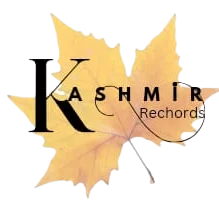( Kashmir Rechords Exclusive)
Like in other parts of the Country, it is the election time in Jammu and Kashmir also. Kashmir Rechords is trying to bring out some salient and interesting facts about Lok Sabha elections held in J&K:-
1. The first general elections in the independent India were held in 1951-52. However, due to the special status of Jammu and Kashmir, this erstwhile Princely State held its own Constituent Assembly elections in 1951.
2. Before 1967, members to the Lok Sabha from Jammu and Kashmir were nominated.
3. Anantnag and Ladakh Parliamentary Constituencies went uncontested in 1967.
4. Ghulam Mohd Mir, who was nominated in 1962, had organised a “Back Benchers Association’’ in Parliament in order to provide them opportunity to speak in the August House.

5.In 1971 general elections, 52 candidates had filed nomination papers from Jammu and Kashmir. Out of them, 20 had later withdrawn.

6.In 1971, Dr Karan Singh and Inderjit Malhotra contested polls on Congress Ticket from (Doda-Udhampur-Kathua) and ( Jammu-Poonch) Constituencies respectively.

7. In 1977, Balraj Puri had contested election on a National Conference ticket.

8. In 1977 polls, election fever in Kashmir was at its high pitch.
9. Srinagar Constituency went uncontested in 1980 and 1989 elections.

10. In mid-term polls of 1980, 28 candidates were in the fray, while as in 1984 and 1989 General Elections 48 and 63 candidates respectively contested the polls.
11.In 1991, mid-term elections could not be held in J&K due to escalation in terrorist activities.
12. In 1996 elections, Amar Nath Vaishnavi fought election on a BJP ticket from Srinagar Constituency getting a total of 35911 votes. Sarla Taploo who was fielded from Anantnag, got 5740 votes while as BJP’s N.N Koul, who contested from Baramulla Constituency, obtained 12261 votes.
Election Symbols of Various Political Parties
In First Lok Sabha Election of India, Human Hand was the symbol of Forward Bloc, while as a Pair of Oxen was symbol of Congress. Oil Lamp was an election symbol of Jan Sangh.
Between 1952 and 1969, the Congress was represented by a pair of bullocks carrying a yoke. But when Indira Gandhi launched her own faction-INC (R) after being expelled from party by then Congress Party president S. Nijalingappa, Congress chose a new election symbol—A Cow with Sucking Calf’’. On the other hand, the “Old Congress” (which had the support of only a few MPs), retained the party symbol of a pair of bullocks. After splitting from the Congress (R) in 1977, Indira Gandhi created Congress (I) with a human hand as symbol .

The election symbol of the Bharatiya Janata Party ( BJP) has also changed over the years. From 1951 to 1977, the party was called as Bharatiya Jana Sangh with an oil lamp as its election symbol. In 1977, when it merged with other political parties to form Janata Party, it chose a farmer and plough symbol to represent it. After the dissolution of the Janata party, BJP was formed. The Party adopted `Lotus’ as its election symbol.


